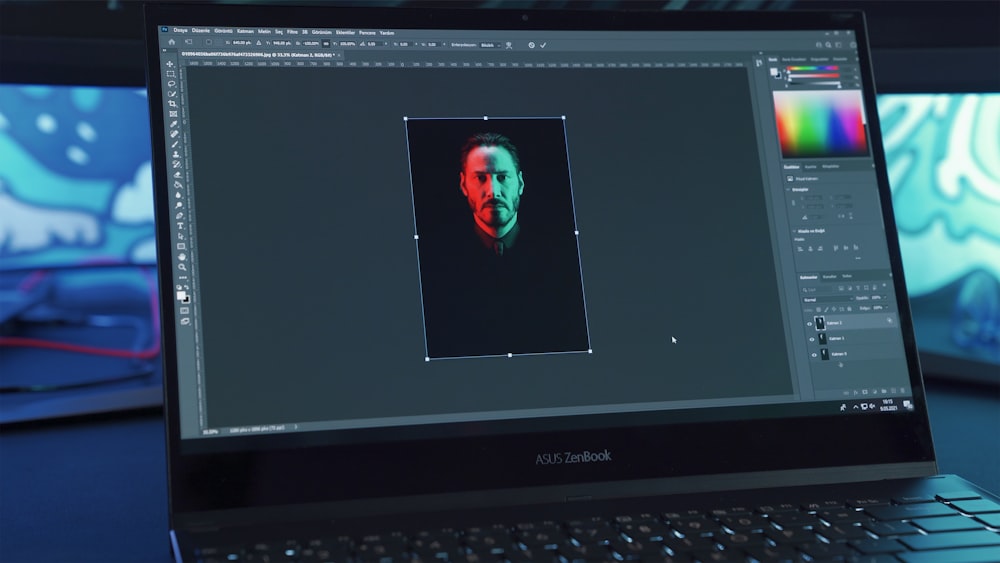Image editing software is a vital tool for photographers, designers, and businesses alike. With a multitude of options available, choosing the right one for your specific needs can prove challenging. This guide aims to explore the best image editing software in 2024, providing comprehensive insights into each one’s features, pros, and cons.
The Power of Image Editing Software
In today’s digital age, image editing software stands as a cornerstone of visual creativity. These powerful tools allow both amateurs and professionals to transform ordinary photos into striking works of art. From basic adjustments like lighting and color correction to advanced techniques like layering and retouching, the right software can unlock a world of possibilities.
The impact of these tools extends beyond personal projects; they’re essential in professional fields such as photography, graphic design, marketing, and social media. A well-edited image can convey messages more effectively, attract viewers, and even drive sales.
Moreover, with the rise of social media and online marketing, high-quality visuals have become more important than ever. The software you choose not only affects the aesthetic appeal of your images but also their ability to engage and captivate audiences.
Choosing the right image editing software involves considering factors like ease of use, feature set, compatibility with your devices, and price. Whether you’re a beginner looking to touch up personal photos or a professional seeking comprehensive editing capabilities, there’s a tool out there that fits your needs. Remember, in the realm of digital imagery, your only limits are your imagination and the capabilities of your software.
The Titan: Adobe Photoshop
Adobe Photoshop is not just software; it’s a benchmark in the world of digital imagery and graphic design. Its name is synonymous with image editing itself, reflecting its dominant position in the industry. Renowned for its comprehensive toolset and versatility, Photoshop caters to a wide range of needs, from simple photo edits to complex digital paintings and 3D designs.
Adobe Photoshop Overview
Photoshop’s strength lies in its depth and breadth of features. Layer-based editing allows for intricate composites and adjustments without permanently altering the original image. Its text tools enable stunning typography, while the plethora of filters and effects can transform any photo into a visual masterpiece. The recent addition of AI-powered features, such as neural filters and automatic sky replacement, has further enhanced its capabilities, allowing users to perform complex edits with ease.
Adobe Photoshop Pros and Cons
One of Photoshop’s most lauded attributes is its AI tools, which simplify tasks that once required extensive time and expertise. The software’s integration with Adobe Creative Cloud offers cloud storage and easy access to assets, enhancing workflow efficiency, especially for teams and professionals working across different locations.
However, Photoshop is not without its drawbacks. The subscription-based pricing model of Adobe Creative Cloud can be a significant investment, particularly for freelancers or small businesses. While the regular updates and cloud services justify the cost for many, others may seek more budget-friendly alternatives without ongoing fees.
Despite these considerations, Adobe Photoshop remains the industry standard for a reason. Its unmatched capabilities, continuous innovation, and comprehensive support resources make it a top choice for professionals worldwide. Whether you’re retouching photos, designing websites, or creating digital art, Photoshop offers the tools and flexibility needed to bring your visions to life.
The Subscription-Free Standout: Affinity Photo
In an era dominated by subscription models, Affinity Photo emerges as a breath of fresh air for those seeking quality without recurring costs. Its competitive one-time purchase price has made it a favorite among hobbyists and professionals alike who prefer a more traditional software investment.
Affinity Photo Overview
Affinity Photo breaks the mold by offering a comprehensive suite of editing tools without the subscription. From detailed RAW file editing to complex digital painting, the software caters to a broad spectrum of creative needs. Its capabilities extend to HDR merging and panoramic stitching, which are particularly beneficial for photographers looking to enhance their landscapes or composite images. The interface, while rich in features, maintains an approachable feel, ensuring that users of all skill levels can harness its full potential.
Affinity Photo Pros and Cons
The innovative use of Personas in Affinity Photo streamlines the workflow by segmenting tools based on the editing phase, whether you’re developing raw images, retouching, or exporting final pieces. This, along with a comprehensive brush library and sophisticated vector tools, positions Affinity Photo as a versatile and powerful editing tool.
However, while Affinity Photo offers an impressive array of features, it does have its limitations when compared to industry giant Adobe Photoshop. Some users may find the absence of certain high-end features, particularly those powered by Adobe’s AI, a significant drawback. Additionally, those deeply ingrained in Adobe’s ecosystem may miss the seamless integration with other Adobe apps and services.
Nevertheless, for many, Affinity Photo’s strengths—particularly its no-subscription pricing model and robust editing capabilities—far outweigh these considerations. It stands as a testament to the fact that professional-grade photo editing doesn’t have to come with a subscription, making it an excellent choice for budget-conscious creatives and professionals looking for a reliable, cost-effective solution.
The Value Champion: PhotoDirector 365
In the competitive world of image editing software, PhotoDirector 365 stands out as a beacon for those who prioritize both cost and functionality. CyberLink has crafted a solution that marries affordability with a robust set of editing tools, making advanced photography editing accessible to a broader audience.
PhotoDirector 365 Overview
This software is designed to cater to photographers and graphic designers who seek a comprehensive toolset without breaking the bank. PhotoDirector 365 is rich in features, from basic adjustments to advanced AI-powered editing tools, all available for a reasonable annual subscription fee. This blend of affordability and capability makes it particularly attractive to hobbyists and professionals alike who require consistent updates and new features without enduring the high costs typically associated with premium software.
PhotoDirector 365 Pros and Cons
One of the significant advantages of PhotoDirector 365 is its suite of AI tools. These include innovative features like AI-powered sky replacement, object removal, and facial recognition, simplifying tasks that would otherwise require intricate manual work. The frame tool and one-click text effects enhance creative possibilities, allowing users to achieve professional-grade visuals with minimal effort.
Despite these strengths, PhotoDirector 365 is not without its limitations. Users looking for extensive video editing functionalities might find the software lacking compared to more specialized video editing suites. While it covers a broad spectrum of photo editing needs, those with a primary focus on video projects might need to look elsewhere or use this in conjunction with other video-centric software.
Nevertheless, for individuals and professionals seeking a middle ground between high-end features and affordability, PhotoDirector 365 presents itself as a compelling option. Its balance of price and performance makes it a standout choice, particularly for those who are keen to explore the realm of AI-assisted photo editing without committing to the higher price tags of premium competitors.
The Organizational Maven: Adobe Lightroom
Adobe Lightroom is a cornerstone for photographers and visual artists who require not just editing capabilities but also superior organization and workflow management. Designed with the needs of photography enthusiasts and professionals in mind, Lightroom provides a comprehensive solution for photo cataloging, editing, and sharing.
Adobe Lightroom Overview
Unlike its sibling, Adobe Photoshop, Lightroom focuses on streamlining photo editing and management processes. It’s built around a non-destructive editing model, meaning you can experiment with various adjustments without permanently altering the original image. This approach, combined with its cloud-based storage system, makes Lightroom an excellent tool for photographers who need to access and edit their photos across different devices and locations.
Adobe Lightroom Pros and Cons
One of Lightroom’s standout features is its cloud synchronization. This allows users to start editing a photo on one device and continue on another without any loss of progress or data. The seamless integration across devices enhances productivity and ensures that your photo library is always up-to-date, regardless of where you are.
However, Lightroom’s focus on efficiency and organization comes with a trade-off. While it offers a wide range of editing tools suitable for most photography needs, it lacks the depth of image manipulation features found in Photoshop. This makes it less ideal for those looking to perform intricate graphic design tasks or complex photo manipulations.
Despite these limitations, Lightroom’s strengths in photo organization are unparalleled. Its cataloging features, including keyword tagging, rating systems, and smart collections, make managing large photo libraries a breeze. For photographers juggling thousands of images, Lightroom’s organizational capabilities are invaluable, helping them keep track of their work with ease and efficiency.
In conclusion, Adobe Lightroom is the go-to choice for users prioritizing organization and workflow in their photography process. While it may not replace Photoshop for heavy image editing, its streamlined approach to photo management and editing makes it indispensable for those looking to maintain large collections and ensure their photos are always ready for display or publication.
The Novice-Friendly Choice: Luminar NEO
Entering the realm of image editing can be daunting for beginners, but Luminar NEO aims to change that. With an emphasis on simplicity and automation, this software is an inviting gateway for those new to photo editing, combining an easy-to-navigate interface with advanced AI capabilities.
Luminar NEO Overview
Luminar NEO is crafted with the novice in mind, stripping away the complexity typically associated with professional photo editing tools. Its suite of AI-powered features, such as automatic body shaping and skin enhancements, allows users to achieve professional-looking results without the steep learning curve. The inclusion of innovative lighting and atmospheric effects further enables users to transform their photos with just a few clicks.
Luminar NEO Pros and Cons
One of the most praised features of Luminar NEO is its ability to seamlessly remove distractions like power lines from photos, which can often be a tedious task in other software. This tool alone can dramatically improve the aesthetic of an image, showcasing Luminar NEO’s commitment to combining simplicity with powerful editing capabilities.
On the downside, while Luminar NEO offers a range of presets and looks, they may not be as extensive or varied as those found in more established software like Lightroom or Photoshop. This could limit users who rely heavily on presets for quick edits.
Despite this, Luminar NEO remains an excellent choice for beginners. Its straightforward approach removes the intimidation factor from photo editing, allowing new users to experiment and learn without feeling overwhelmed. For anyone starting their journey in image editing, Luminar NEO provides the perfect balance of user-friendliness and powerful features, making the process both enjoyable and rewarding.
The Web-Based Wonder: Pixlr X / Pixlr E
In an age where cloud-based services are becoming the norm, Pixlr X and Pixlr E stand out as top contenders for those in need of a quick, accessible photo editing solution. These platforms cater to a wide audience, from casual users looking to enhance their personal photos to professionals needing to make quick edits on the move.
Pixlr X / Pixlr E Overview
Pixlr X and Pixlr E are designed to be user-friendly and accessible, ensuring that even those with minimal editing experience can achieve impressive results. The platforms provide a comprehensive set of editing tools that rival many desktop applications, all without the need to download or install any software. Whether you’re looking to perform basic edits such as cropping and resizing or more complex tasks like color correction and cloning, Pixlr has you covered.
Pixlr X / Pixlr E Pros and Cons
The convenience of Pixlr cannot be overstated. Being web-based, it allows users to edit images from any device with internet access, offering unparalleled flexibility. This makes it an ideal choice for individuals who travel frequently or do not have access to a dedicated editing machine. Additionally, the ability to switch seamlessly between the more straightforward Pixlr X and the more advanced Pixlr E ensures that users have the right tools for any job.
However, the platform’s ad-supported nature in its free version can be a double-edged sword. While it provides users with professional-grade tools at no cost, the presence of ads can interrupt the editing workflow and detract from the user experience. For those who find this bothersome, there is the option to upgrade to a premium version, which removes ads and unlocks additional features.
Despite this minor drawback, Pixlr X and Pixlr E continue to be popular choices for those seeking a capable, flexible photo editing solution without the commitment of a software download or subscription. Whether you’re making quick edits on a tablet or conducting more detailed work on a desktop, Pixlr’s platforms offer a level of convenience and versatility that is hard to beat.
The Open-Source Offering: GIMP
GIMP stands as a testament to the power and potential of open-source software. Offering a rich array of editing capabilities, it serves as a viable alternative to commercial image editing programs, catering to a diverse user base, from hobbyists to professionals.
GIMP Overview
At its core, GIMP is designed to offer a comprehensive editing experience. Users can dive into anything from basic photo retouching to complex graphic design and digital art creation. Its array of features rivals that of premium software, encompassing everything necessary for high-level image manipulation. The fact that GIMP is open-source not only means it’s free but also that it benefits from regular updates and contributions from developers around the world. This collaborative effort ensures the software remains up-to-date with the latest trends and technologies in image editing.
GIMP Pros and Cons
The most significant advantage of GIMP is undoubtedly its cost-free access. Unlike many of its competitors, GIMP provides professional-grade tools without the price tag, making it an invaluable resource for individuals and small businesses on a tight budget. Additionally, its open-source nature allows for extensive customization; users can modify the software to fit their specific workflow needs and even develop their own plugins and extensions.
However, GIMP’s strengths can also be seen as its weaknesses, particularly for those new to image editing. The interface, which offers immense flexibility and customization, can be overwhelming for beginners. Its layout and toolset, while powerful, do not always align with the streamlined, user-friendly designs of more commercial offerings. As a result, new users may face a steeper learning curve when familiarizing themselves with GIMP compared to more intuitive programs.
Despite these challenges, GIMP remains a standout choice for those willing to invest the time in learning its ins and outs. Its robust toolkit, combined with the ethical and economic benefits of open-source software, makes GIMP a compelling option for anyone seeking a comprehensive, cost-effective solution to image editing. Whether you’re editing photos, creating digital art, or designing graphics, GIMP offers a level of depth and flexibility that few free programs can match.
Wrapping Up
Choosing the right image editing software ultimately depends on your specific needs. Whether you’re a beginner seeking an easy-to-use platform, a professional in need of advanced tools, or someone looking for a balance between cost and features, there’s a software option out there for you. By understanding the strengths and weaknesses of each option, you can make an informed decision that best suits your image editing needs.
FAQ: Image Editing Software
Which software is best for picture editing?
Adobe Photoshop is widely regarded as the industry standard for picture editing due to its comprehensive features and tools. However, the best software can vary based on your specific needs and skill level.
Which is the best tool to edit an image?
For professional photographers and designers, Adobe Photoshop and Lightroom are considered top tools for image editing. For casual users, apps like Canva or Adobe Spark might be more user-friendly.
What is the best free image editor?
GIMP (GNU Image Manipulation Program) is one of the best free image editors available. It offers many of Photoshop’s features and is highly customizable.
Is there a free alternative to Photoshop?
Yes, GIMP is a popular free alternative to Photoshop. Other free alternatives include Paint.NET and Krita, which also offer a range of editing functionalities.
Is GIMP as good as Photoshop?
GIMP is a powerful image editor and can perform many of the same functions as Photoshop. However, it may lack some of the advanced features and the polished user interface of Photoshop. The choice between them depends on your specific editing needs and budget.
Is GIMP really free?
Yes, GIMP is entirely free to download and use. It is open-source software, meaning its source code is available for anyone to study or modify.
What are the disadvantages of GIMP?
Some of the disadvantages of GIMP include a less intuitive interface compared to Photoshop, a steeper learning curve for beginners, and the absence of some advanced features found in premium editing software.
Can GIMP do everything Photoshop can?
While GIMP is powerful and versatile, it does not have all the advanced features and tools that Photoshop offers, such as certain types of layer adjustments, advanced 3D editing, and more comprehensive graphic design features. However, for most general image editing needs, GIMP is a capable alternative.
Featured Image Credit: Photo by James Scott; Unsplash – Thank you!












